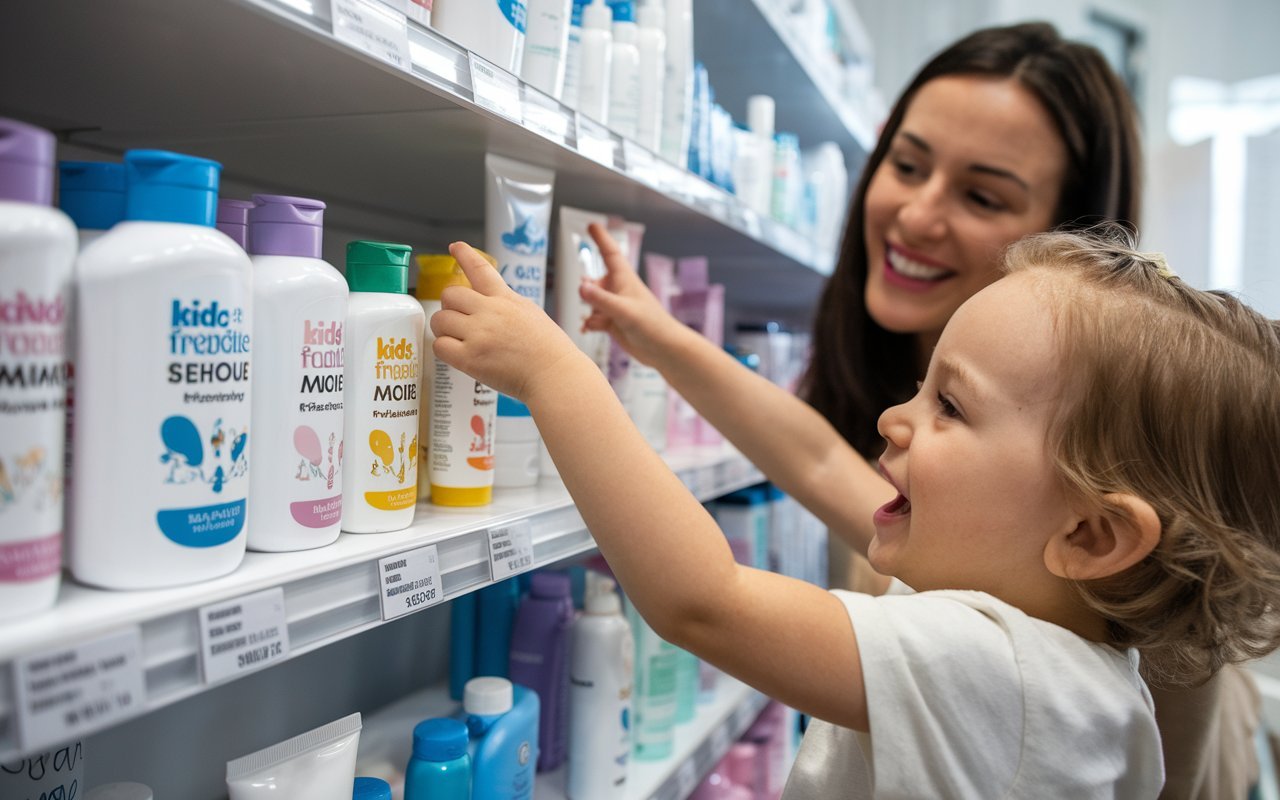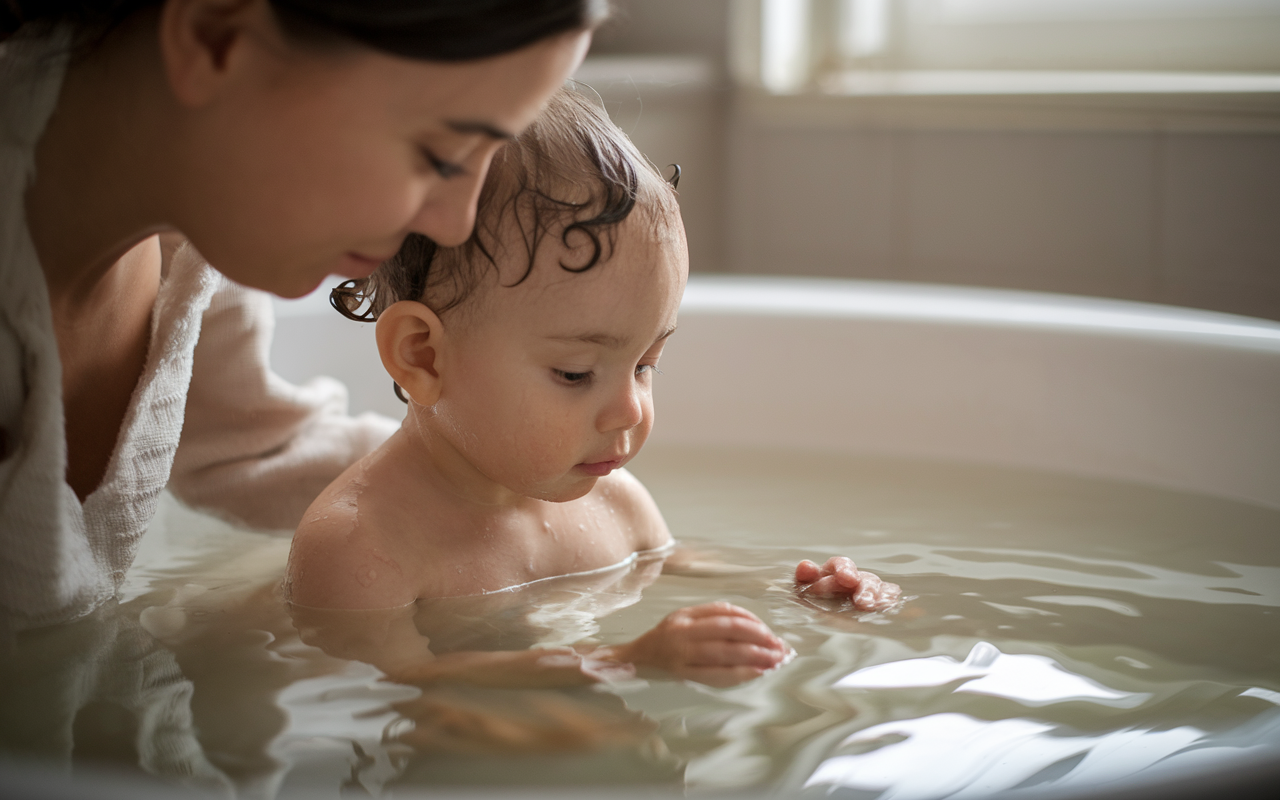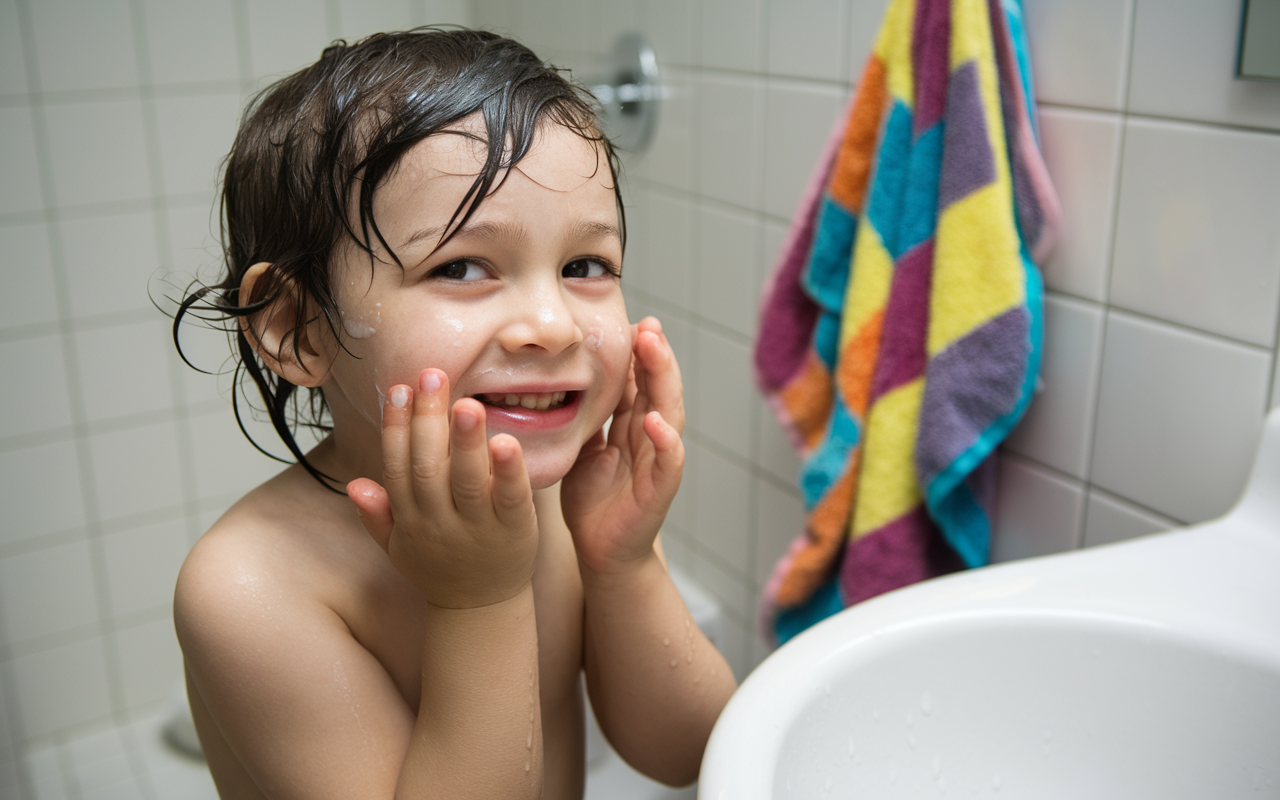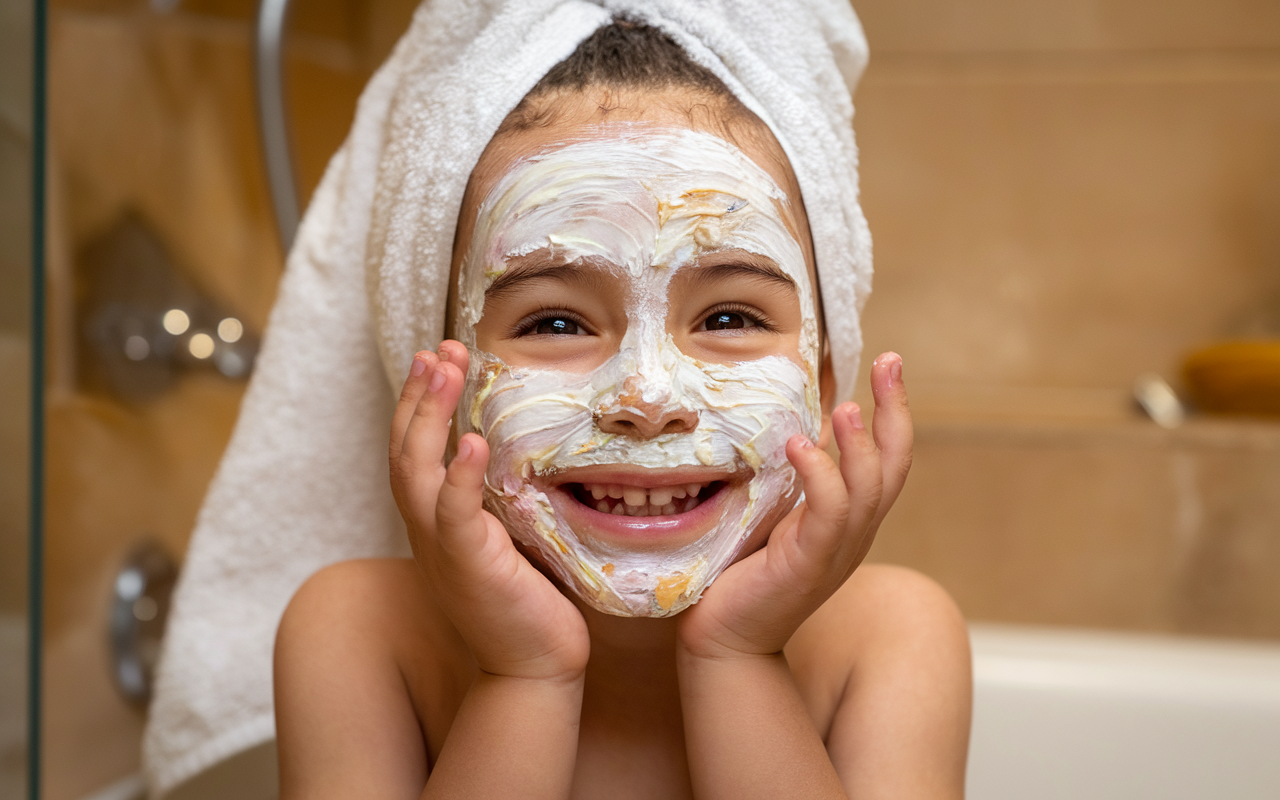
Introduction
Kids skin care is not just about choosing the right products or avoiding certain ingredients; it’s about creating a loving and protective environment for our children’s skin. As parents, we want nothing but the best for our kids, and their skin deserves the same tender, loving care that we give to every other aspect of their lives. This comprehensive guide will explore everything you need to know about kids skin care, helping you make informed decisions that keep your child’s skin healthy, happy, and glowing.
Why Kids’ Skin Care is Unique
The Delicate Nature of Children’s Skin
Children’s skin is incredibly sensitive and delicate, making it more susceptible to irritation, dryness, and other common skin conditions. The reason for this lies in the fact that kids’ skin is still developing; it is thinner and less resilient than adult skin. This fragility means that children’s skin is less capable of retaining moisture and more prone to losing essential oils. As a result, kids skin care must focus on protection and nourishment to maintain the skin’s natural barrier and prevent irritation or damage.
How Kids’ Skin Differs from Adults’ Skin
Understanding the differences between kids’ skin and adult skin is crucial for effective kids skin care. While adults’ skin has had years to build up defenses against environmental stressors like sun exposure, pollution, and harsh chemicals, kids’ skin lacks these built-in protections. This makes it more vulnerable to damage from the sun and environmental irritants. Additionally, children’s skin cells regenerate faster than adults’, meaning they heal quicker but also require more frequent moisturizing and care to stay balanced and healthy.
Common Skin Concerns in Kids Skin Care
Dry Skin: A Common Issue
Dry skin is one of the most prevalent concerns in kids skin care. Many children experience dry, flaky patches on their skin, which can be caused by environmental factors such as cold weather, low humidity, and excessive bathing. In some cases, dry skin can also be a result of using harsh soaps or bathing products that strip the skin of its natural oils. When it comes to kids skin care, it’s essential to use gentle cleansers and moisturizers specifically formulated for sensitive skin to help keep dryness at bay.
Eczema: Managing This Common Condition
Eczema is another common issue in kids skin care. This chronic condition causes the skin to become red, itchy, and inflamed, often appearing in patches on the face, hands, or inside the elbows and knees. Eczema flare-ups can be triggered by a variety of factors, including allergens, irritants, stress, and even changes in weather. Managing eczema effectively requires a comprehensive kids skin care routine that includes moisturizing regularly, using fragrance-free products, and avoiding known triggers. In some cases, a healthcare provider may recommend prescription treatments to help manage symptoms and prevent flare-ups.

Diaper Rash: A Common Skin Concern for Infants
Diaper rash is a frequent concern in kids skin care, particularly for infants and toddlers. This condition occurs when the skin in the diaper area becomes irritated due to prolonged exposure to wet or soiled diapers. Diaper rash can cause redness, swelling, and discomfort, making it essential for parents to change diapers frequently and use a protective barrier cream to prevent moisture from irritating the skin. In severe cases, a pediatrician may recommend a specific treatment to soothe the skin and promote healing.
Sunburn and Skin Damage: The Importance of Protection
Sunburn is a significant concern in kids skin care, especially during the summer months or in sunny climates. Children’s skin is more susceptible to UV damage than adults’ skin, making it crucial to provide adequate protection from the sun. Sunburn not only causes immediate discomfort and pain but can also increase the risk of skin cancer later in life. In kids skin care, it’s vital to use a broad-spectrum sunscreen with at least SPF 30, wear protective clothing, and avoid sun exposure during peak hours.
Building a Gentle Kids Skin Care Routine
The Importance of Gentle Cleansing
Cleansing is a fundamental step in any kids skin care routine. Children’s skin needs to be cleaned of dirt, sweat, and other impurities, but it’s essential to use gentle cleansers that won’t strip the skin of its natural oils. Over-cleansing or using harsh soaps can lead to dryness and irritation, making it vital to choose products that are specifically formulated for sensitive skin.
Selecting the Right Cleanser for Kids Skin Care
When selecting a cleanser for kids skin care, look for products that are soap-free, fragrance-free, and specifically designed for children. These cleansers are typically made with gentle ingredients that won’t irritate sensitive skin or cause dryness. Additionally, avoid cleansers with sulfates or other harsh chemicals that can strip the skin of its natural oils.
Best Practices for Washing Kids’ Skin
When washing your child’s skin, use lukewarm water and a gentle cleanser to avoid drying out the skin. It’s generally not necessary to wash the entire body every day; instead, focus on areas that tend to get dirty, such as the hands, face, and diaper area. After cleansing, pat the skin dry with a soft towel rather than rubbing, which can cause irritation.
Effective Moisturizing in Kids Skin Care
Moisturizing is a crucial step in kids skin care, helping to maintain the skin’s natural moisture barrier and prevent dryness. Hydrating the skin regularly can also help soothe irritation and prevent flare-ups of conditions like eczema.
Why Hydration is Crucial in Kids Skin Care
Hydrated skin is healthy skin. In kids skin care, keeping the skin well-moisturized helps prevent dryness and irritation, which can lead to more serious skin conditions. Applying a gentle, hydrating lotion immediately after bathing helps seal in moisture and keep the skin soft and supple.
Choosing the Best Moisturizers for Kids
When selecting a moisturizer for kids skin care, look for products that are fragrance-free, hypoallergenic, and specifically formulated for children. Ingredients like glycerin, shea butter, and ceramides are excellent for retaining moisture and soothing sensitive skin. Avoid moisturizers with alcohol or other harsh chemicals that can irritate the skin.
The Role of Sun Protection in Kids Skin Care
Understanding the Need for Sunscreen
Sunscreen is a vital part of kids skin care, providing protection against the harmful effects of UV rays. Children’s skin is more vulnerable to sun damage, making it essential to use a broad-spectrum sunscreen with at least SPF 30 whenever they are outside.
Selecting the Right Sunscreen for Kids Skin Care
Not all sunscreens are suitable for children, especially those with sensitive skin. When selecting a sunscreen for kids skin care, look for products that are specifically designed for children and contain physical blockers like zinc oxide or titanium dioxide. These ingredients sit on top of the skin and reflect UV rays, making them less likely to cause irritation.
Key Ingredients in Kids Sunscreen
In kids skin care, choosing the right sunscreen is crucial for protecting against sun damage. Physical blockers like zinc oxide and titanium dioxide are ideal for children’s sensitive skin because they provide broad-spectrum protection without being absorbed into the skin. Additionally, look for sunscreens that are free from fragrances, dyes, and other potential irritants.
How to Properly Apply Sunscreen for Maximum Protection
To ensure maximum protection, apply sunscreen generously to all exposed skin at least 15 minutes before going outside. Reapply every two hours, or more often if your child is swimming or sweating. Be sure to cover often-forgotten areas like the ears, back of the neck, and tops of the feet. In kids skin care, it’s essential to teach children the importance of sun protection from a young age to help instill healthy habits.

Managing Sensitivities and Allergies in Kids Skin Care
Recognizing Common Allergens and Irritants
In kids skin care, it’s important to be aware of potential allergens and irritants that can trigger reactions. Common culprits include certain soaps, laundry detergents, and even foods. Keeping a close eye on your child’s skin and noting any reactions can help identify these triggers and prevent future issues.
Skin Care Tips for Kids with Sensitive Skin
For children with sensitive skin, it’s essential to choose hypoallergenic products that are free from dyes, fragrances, and other potential irritants. Use gentle, soft fabrics for clothing and bedding to minimize irritation, and avoid using too many products on your child’s skin. In kids skin care, less is often more; keeping routines simple and using minimal products can help reduce the risk of reactions.
Exploring Natural Remedies for Kids Skin Care
Safe and Effective Homemade Solutions
Natural remedies can be a gentle and effective addition to kids skin care, providing relief from common skin issues without the use of harsh chemicals. For example, oatmeal baths can soothe itchy, irritated skin, while aloe vera gel can help heal minor cuts and sunburns. When using natural remedies, it’s important to ensure they are safe for children and consult with a healthcare professional if you’re unsure.
Knowing When to Use Natural Remedies
While natural remedies can be beneficial, they aren’t always the best option for every situation in kids skin care. If a skin condition doesn’t improve or seems to be getting worse, it’s important to seek medical advice. Remember, natural doesn’t always mean better or safer, especially for sensitive young skin.
The Impact of Nutrition on Kids Skin Care
Nutrient-Rich Foods for Healthy Skin
A balanced diet plays a significant role in kids skin care, providing the essential nutrients needed for healthy skin development. Foods rich in vitamins A, C, and E, as well as omega-3 fatty acids, support healthy skin by promoting cell growth and repair. Incorporating fruits, vegetables, nuts, and fish into your child’s diet can help nourish their skin from the inside out.
Hydration and Its Benefits for Skin Health
Hydration is key to healthy skin in kids skin care. Ensuring your child drinks plenty of water throughout the day helps keep their skin hydrated and flushes out toxins that can contribute to skin issues. Promoting good hydration habits can make a big difference in maintaining soft, supple skin and preventing dryness.
Making Kids Skin Care Fun and Engaging
Tips for Making Kids Skin Care Routine Enjoyable
Kids are more likely to engage in their skin care routine if it’s fun and interactive. Turn it into a bonding experience by letting them choose their own gentle products or sing songs while washing up. Positive reinforcement and making it a game can help instill good skin care habits early on, making kids skin care a fun and enjoyable part of their daily routine.
Encouraging Kids to Participate in Their Skin Care
Involving children in their skin care routine not only empowers them but also teaches them the importance of self-care. Encourage them to apply their own moisturizer or sunscreen and praise their efforts. This hands-on approach helps build confidence and a sense of responsibility for their own well-being.
Knowing When to Consult a Dermatologist for Kids Skin Care
Identifying Serious Skin Issues in Kids
While most skin issues in kids can be managed with proper care, some conditions require professional attention. Persistent redness, severe itching, blistering, or any unusual changes in the skin should be evaluated by a dermatologist. Early intervention can prevent more serious issues from developing and ensure your child’s skin stays healthy.
How to Prepare for a Dermatologist Visit
Before visiting a dermatologist, take note of your child’s symptoms, any products they’ve been using, and any potential triggers you’ve identified. Bringing this information to the appointment can help the dermatologist make an accurate diagnosis and provide the best treatment plan for your child. In kids skin care, being prepared can make all the difference in getting the right care for your child.
Conclusion
Kids skin care is a journey filled with learning, love, and dedication. From understanding the unique needs of children’s skin to selecting the right products and practices, every step we take is an act of care. By nurturing their skin, we protect them from discomfort and help build a foundation for lifelong health and confidence. Remember, each child’s skin is unique, and finding what works best for them is key. Here’s to happy, healthy skin and joyful days ahead!
FAQs
Q: How often should I bathe my child?
A: A daily bath with mild soap is usually enough for most children. Focus on areas that get particularly dirty, such as the hands, face, and diaper area.
Q: What should I do if my child has a rash?
A: If your child develops a rash, try to identify any new products or foods that might have caused it. Use gentle, soothing creams and consult a healthcare provider if the rash persists or worsens.
Q: Are natural products always better for kids’ skin?
A: Not necessarily. While natural products can be great, it’s important to ensure they are safe and suitable for your child’s skin type. Always do a patch test and consult a pediatrician if you have any concerns.
Q: How can I prevent my child from getting sunburned?
A: Use a broad-spectrum sunscreen with at least SPF 30, and apply it generously to all exposed skin. Reapply every two hours, especially if your child is swimming or sweating.
Q: What are some signs that my child’s skin condition is serious?
A: Persistent redness, severe itching, blistering, or any unusual changes in the skin should be evaluated by a dermatologist. Early intervention can prevent more serious issues from developing.
Also Visit:
Discovering the Secrets Behind Korean Steps to Skin Care 2024
The Ultimate Guide to Makeup and Skincare 2024 – Finding Your Perfect Balance
Skin Care Headband – The Secret to a Mess-Free Beauty Routine 2024



